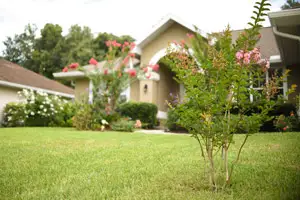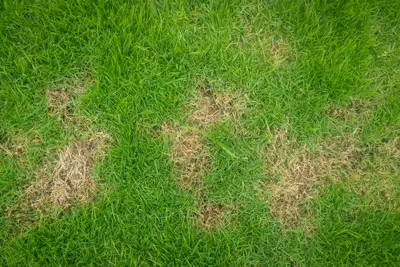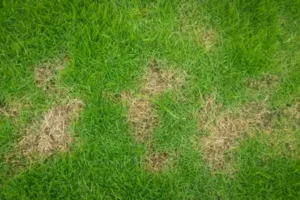 Your soil serves as the foundation for a healthy lawn. Whether you have lush green grass or brown spots on your lawn, one thing is certain, your lawn growth (or lack of) reflects the quality of your soil. This is why we came up with this helpful guide to help you determine what is going on with your soil and how you can properly care for it.
Your soil serves as the foundation for a healthy lawn. Whether you have lush green grass or brown spots on your lawn, one thing is certain, your lawn growth (or lack of) reflects the quality of your soil. This is why we came up with this helpful guide to help you determine what is going on with your soil and how you can properly care for it.
Arc of Mushrooms
Has a mushroom-formed circle appeared on your lawn? This is called a fairy ring. No, it’s not a magical portal. Fairy rings are a fungus infestation. They start as dark green circles and develop into mushrooms that will break down organic matter in the soil, eventually killing the grass. If you have fungus on your lawn, you’ll want to avoid watering at night. A fungicide may also help treat the affected area.
Brown Spots
Brown patches in your lawn are a sign that your soil is too acidic. A soil test can help determine the pH of your lawn soil. These pH testing kits can be found in many hardware stores and garden centers. If the results show your soil is highly acidic, you may want to consider a lime treatment to help balance the pH.
Clumps of Grass
If your grass is coming up in clumps, you most likely have grubs. Grubs are the larvae of Japenese Beetles. They typically look like small white worms; the bigger they are, the more damage they cause. You can check for grubs by cutting out a small section of grass and lifting it up like a piece of carpet. They’ll be just under the surface. Most grub-control products sold in stores are preventive measures. If you have an existing grub infestation, you’ll want to hire a professional. They’ll be able to apply a fast-acting insecticide to eliminate these pests quickly and effectively.
Wilting Grass
Wilting can be a sign of a pest infestation, disease, a lack of soil moisture or heat stress.
- You can get a better idea of the moisture in your soil by pushing a screwdriver into the soil in brown and green areas. If the blade easily slips into green areas but not through brown areas, the soil in those areas is dry.
- If footprints remain on your lawn after a person has walked on it, in addition to wilting, heat stress may be the culprit.
- Detecting lawn pests is a little more difficult. You could cut a section of grass and pull it back to located potential pests since most live just below the soil surface. For lawn pest care, you’ll want to contact your local landscaping company. Many landscaping companies offer lawn pest control services that provide safe treatment options for your family and pets.
If your lawn is showing any of these symptoms, we recommend you take action before your problems get worse.


 Does your lawn have dead patches despite all the care you provide it? You may have insects calling your lawn, “home.” In this blog, we’ll talk about lawn-damaging insects and the signs you may have them.
Does your lawn have dead patches despite all the care you provide it? You may have insects calling your lawn, “home.” In this blog, we’ll talk about lawn-damaging insects and the signs you may have them.